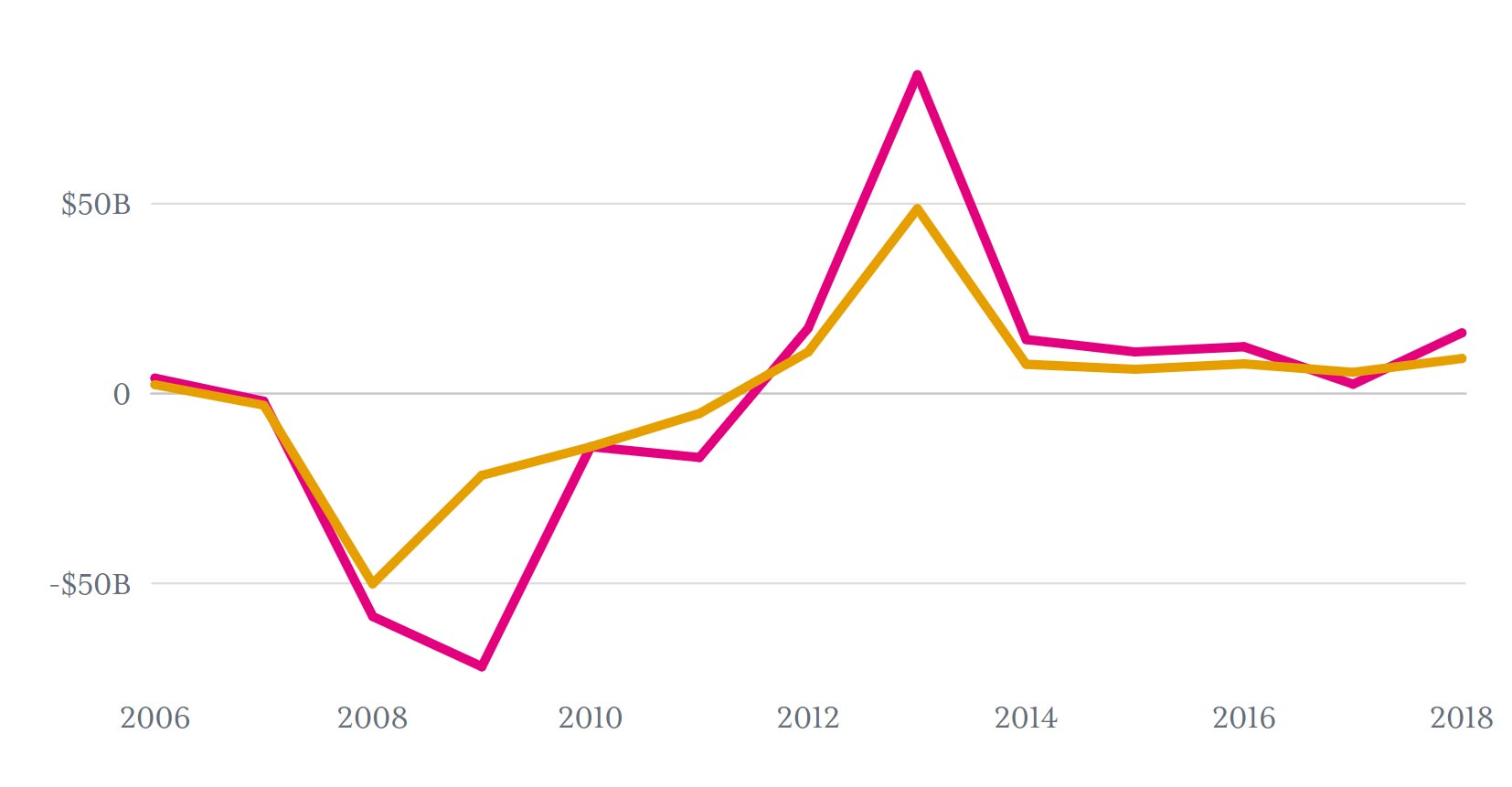Economy
As union membership declines, how common are labor strikes in the US?

Households are spending a higher percentage of their budgets on housing, healthcare, and education than almost 30 years ago, according to the latest data from the Bureau of Labor Statistics. US households are also spending less on clothing, food, and transportation.
In 2020, the average American household spent about $51,800 on goods and services[1]. Housing was the biggest expense at about 40% of all household spending. Americans also spent more than 10% of their total budgets on transportation (19%), food (14%), and medical care (10%).
But it wasn’t always this way. Household spending towards housing is more than double what it was in 1993, the farthest government data goes back. Healthcare and education costs almost tripled during the same time period. And while the rising costs of all three have made headlines in recent years, price increases aren’t the only explanation for the shifts in household budgets.
The shifts in household spending are due to changes in what people are buying and the prices they pay for those goods and services.
For example, the average household spent almost $350 on fresh fruits and vegetables in 2020. As a share of total household spending, this was an increase of 14% since 1993. Most of this increase was driven by households literally buying more fruits and vegetables. In 2020, the average household consumed almost 30% more fruits and vegetables than in 1993. Prices for fruits and vegetables did increase, but the growth in prices was roughly in line with price changes overall. In other words, households are spending a greater portion of their budgets on fruits and vegetables because they are eating more of them, not because they cost more.
Similarly, changes in preferences explain the 31% drop in household spending on reading. It’s not that reading materials got cheaper (prices for reading materials rose in line with the overall price level), but — maybe driven by the shift of reading material to the internet — households consumed less of it. In 2020, the average household bought 60% fewer books, magazines, and newspapers than they did in 1993.
But for some items, households are spending more not because they are consuming more of those items, but because prices increased. For example, even though the average household consumed only 13% more healthcare in 2020 than in 1993, the proportion of their total budget allocated to healthcare almost doubled.
The sharp increase in the share of household budgets devoted to healthcare is explained by rising prices. Between 1993 and 2020, prices overall rose by 77%. But over that same period, the price of medical care rose by roughly twice as much (147%).
On the opposite end of the scale, households are spending 3% less on apparel and related services than in 1993. But that’s primarily due to the costs going down for those purchases. American households didn’t cut way back on clothing in their budgets. It’s more that prices for those purchases haven’t risen at the same rate as other kinds of costs, so apparel takes up less of a household’s spending.
It’s not always rising costs or households buying more of something that causes shifts in household budgets. For education spending, it’s both. Between 1993 and 2020, the cost of education more than tripled. Even as prices rose, households consumed 70% more education in 2020 than 1993.
The double impact of rising prices and buying more of it caused education’s share of the household budget to increase by 45% from 1993 to 2020.
Learn more from USAFacts and get the data directly in your inbox by signing up for our newsletter.
Cash contributions, personal insurance and pension contributions were excluded from household expenditure totals for the analysis in this article.
Economy
Economy
Economy
Economy
Newsletter
Keep up with the latest data and most popular content.


